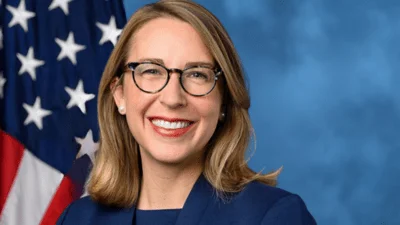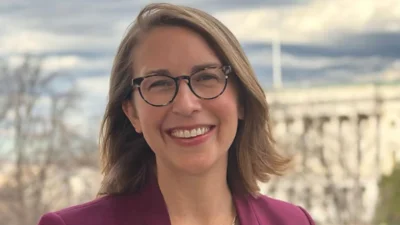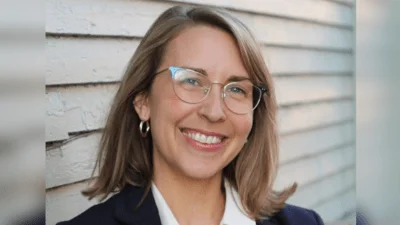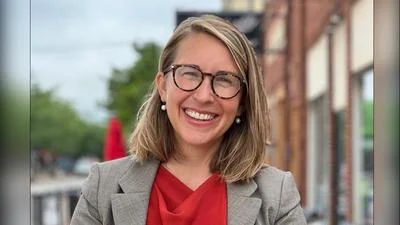GRAND RAPIDS, Mich. – The City’s FY2023 Fiscal Plan represents a continuation of essential City services with an understanding that recent events required the City of Grand Rapids to address specific public safety questions. While the police department plays a key role, the City recognizes that enhancing public safety requires active support of the entire community, as such, it is taking a holistic approach to improving public safety.
The Police Department budget accounts for 34.1% of the General Operating Fund in FY2023 – down from 38.6% in FY2021 – as the City continues to collaboratively seek innovative public safety reforms that address the underlying issues holistically. To that end, we’ve made specific targeted investments in areas beyond law enforcement.
For FY2023, annual resources for the Office of Oversight and Public Accountability increased from $405,781 to $2.3 million and allows the office to hire an additional full-time staff person, lead the coordination of additional police training for officers that is community informed and engaged. Training will also center on cultural competency and de-escalation that officers co-experience with community members. The budget provides funding for OPA to engage the immigrant and refugee community more effectively. It also transfers oversight of the body camera contract procurement and contract enforcement from Police to OPA.
The department has also launched a $700,000 partnership with Network180, our Kent County Public Health Mental Health Authority Partner, for an enhanced mental health co-response mobile crisis intervention team. Mental health and behavioral health clinicians are now co-responding or leading the response for certain calls for service for which civilians are more trained to respond than law enforcement.
Equitable economic growth remains essential and the City of Grand Rapids wants to ensure that recovery from the pandemic is equitable for all communities. Growing housing supply, especially affordable housing, remains a critical regional success factor. The nearly $6 million allocated to the Affordable Housing Fund and potential growth of that fund based on the disposition of City-owned land at 201 Market Avenue will assist in creating more housing options. Affordable Housing Fund investments will begin this fiscal year to help drive creation of new housing. That work will be complemented by both annual and supplemental federal Community Development Block Grant (CDBG) and HOME program investments that are anticipated to:
- Support 625 households receiving financial assistance and supportive services to obtain or retain permanent housing; and 4,500 people completing intake assessments as a first step to create a housing plan to resolve homelessness.
- Support development of 211 new homes with approximately $2.3 million of HOME-ARP funds reserved for future projects.
At last week’s Committee of the Whole and Public Safety Committee meetings, several administrators reported on what they and their teams are doing to improve public safety outcomes. Updates from Cure Violence, the Fire Department, 61st District Court and Parks and Recreation reinforced that holistic strategy.
City Manager Mark Washington began the conversation by recognizing that tackling gun violence and crime is not something that the Grand Rapids Police Department can do alone.
“It’s going to take the community and our partners inside and outside of government to make that happen,” Washington said. “Each of us have a vital role in crime prevention. Our partners at the Grand Rapids Area Urban League and Cure Violence play an important role, but so do our departments such as Parks and Recreation and Community Development. Our holistic approach of all of our government services, along with our community partners, can make an impact and ensure we have better outcomes.”
As part of his presentation outlining his departmental review and policy recommendations, Chief of Police Eric Winstrom said his department is excited to work along with its partners within the City to take a holistic approach to crime prevention.
“We all recognize that different City departments can help prevent crime,” he said. “We can’t do it alone. The police department is part of the solution, but it is not the only solution. Whether it’s Parks and Recreation providing summer programming so our kids are active, code enforcement cleaning up a vacant house, or engineering or Mobile GR working on slowing traffic on a street through road diets – we all can play a part in making this a safer community.
“I feel really excited because there is a lot of support from fellow administrators and leaders in the City to join with us in tackling this issue. I think when we work together, we can make a real positive impact.”
Mayor Rosalynn Bliss thanked Chief Winstrom for his presentation and specifically paid tribute to the officers and the entire department for their service.
“Even in these trying times, you continue to get up, show up and respond to critical incidents in our city,” Mayor Bliss said. “With all of that, you continue to work really hard to get out, reach out and engage with our residents and business owners to identify ways we can move forward and create the changes that our community wants to see.”
City Manager Washington echoed the Mayor’s sentiments stating, “We strive for brave and equitable policing in Grand Rapids, and I have seen that from our officers in a recent incident in which an officer provided first aid an personal ambulatory service to a victim of a gunshot wound to the head. I want to thank Chief Winstrom for his leadership in promoting that type of culture. I also want to recognize our officers who perform to that high standard day-in and day-out, especially in these days where their actions are highly scrutinized.”
As referenced earlier, Cure Violence, is an evidenced based crime prevention tool that the City and community partners at Spectrum Health support and the Urban League implements.
Cure Violence Site Director Steven B. Jackson reported that, after its first year in operation, Cure Violence is making an impact in the community.
“The Cure Violence model works and is working,” he said. “It is not a short-term solution to the increases in crime that we’ve seen but is a long‐term investment that helps to impact the disease of violence through a targeted health‐based approach.”
Jackson said that over the last eight months the community is beginning to connect with Cure Violence in tangible ways including, but not limited to the following:
- Parents are reaching out and connecting with the CV Team requesting help with their children who may be involved in gang‐related activity with the hopes of CV staff detecting and interrupting violence before it occurs.
- Schools are actively recruiting the CV Team to visit and make a regular presence to further engage with youth during and after school hours.
- Cure Violence has expanded mental health partnerships with Priority Health, Pine Rest, Family Outreach Center, Arbor Circle, and Catherine’s Health Center.
- Engaged in 2,170 interactions that led to violence detections and interruptions.
- 980 were with high‐risk individuals.
- 1,190 were with medium‐risk individuals.
- Cure Violence has had 51 interactions that led to the identification and treatment of high-risk individuals that served to defuse immediate conflicts that had a high‐risk of leading to gun violence.
- Cure Violence has had 143 interactions that led to mediations with key individuals involved in other conflicts that led to community mobilization towards ultimately changing norms.
- Participated in 20 community events interacting with more than 5,000 residents
- Sponsored 20 family engagement events, which included vigils, funeral support, barbecues, graduations and other special events.
- Created 30 partnerships with other community organizations working to end violence
- Initiated 12 visits to Juvenile Detention Centers to connect with those incarcerated. Its impact is so great that the Cure Violence team is the most guest-requested by juvenile residents.
- Its reputation in the community is gaining traction, as it has received more than 200 requests from parents requesting interventions between them and their children.
Dr. Stephan Worst, PhD told the Commission that, “That data bear witness to what we hoped would be happening. The program itself is working. The prediction is that Cure Violence is having some kind of positive impact. We need to study, over time, over the course of the entire year of 2022, whether or not this prediction is valid.”
Finding active and fun ways to stay out of trouble is a key component of a holistic approach to public safety. Parks and Recreation Director David Marquardt said his department plays an important role in providing healthy alternatives for youth and families to participate in.
Marquardt outlined several programs offered by the City that can keep youth active and positively engaged. Those summer youth opportunities include our popular City pools at Briggs, MLK and Richmond parks. Each are open 7 days-a-week, June 10 through August 10 ‒ Sunday and Monday 1 to 5 p.m.; Tuesday 1 to 6 p.m.; Thursday, Friday and Saturday 1 to 8 p.m.
More than 225 kids, age 6 to 12, are enrolled in free summer day camps at Garfield, Joe Taylor, MLK and Roosevelt parks. Each weekday, staff provides four hours of arts and crafts, gardening, physical activities, and outdoor adventure excursions.
The City’s GRow1000 summer employment program has been instrumental in providing job skills for young people ages 15 to 24. Nearly 200 are learning important first job skills from a variety of employers throughout the city.
The holistic approach also includes the justice system. Tanya Todd, court administrator 61st District Court, reported on all the ways the court is helping to transform lives through the legal process.
The 61st District Court continues to offer domestic assault response services. A dedicated professional is on staff to offer victims support via text and email and provides resources and follow up. Victim support can offer help with filing personal protection orders (PPD), family safety plans, etc.
Todd also pointed out that its problem-solving courts include two Sobriety and one Drug Courts. Each offers intensive treatment programs including randomized drug testing, incentives and sanctions and resources to improve and enrich lives. All participants and especially graduates of these programs had significantly lower recidivism rates.
The Court also contributes to enhancing the community through its work crew and work program. Those directed to participate by the court or those who volunteer to work off fines work in the community and are hired by the City, at a reduced wage compared to the private sector, to remove sidewalk snow, mow lawns, weed, pick up trash, trim shrubs and other general cleanup tasks.
As you can see, reducing crime and gun violence is something not only one department can achieve. It will take the entire community, and a holistic approach to achieve the City’s vision that Grand Rapids be nationally recognized as an equitable, welcoming, innovative and collaborative city with a robust economy, safe and healthy community, and the opportunity for a high quality of life for all.
Original source can be found here.




 Alerts Sign-up
Alerts Sign-up